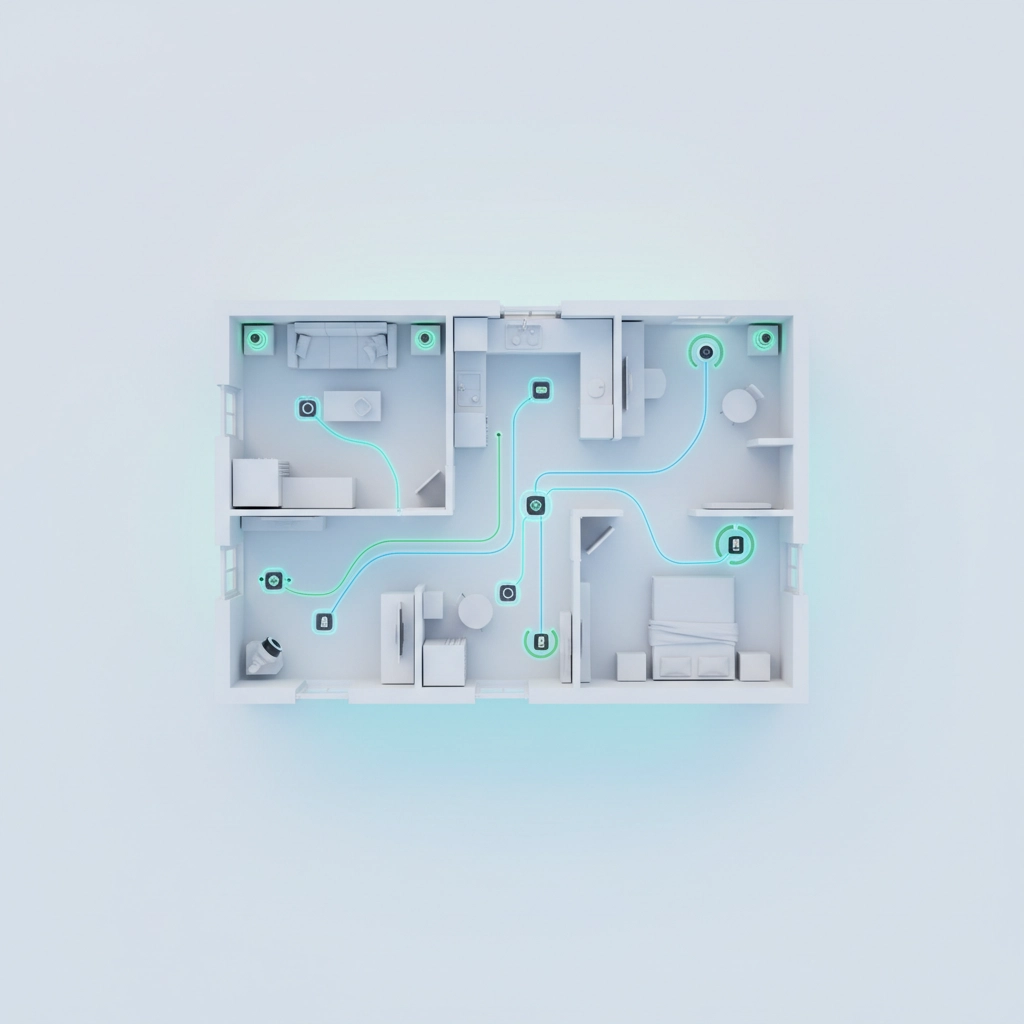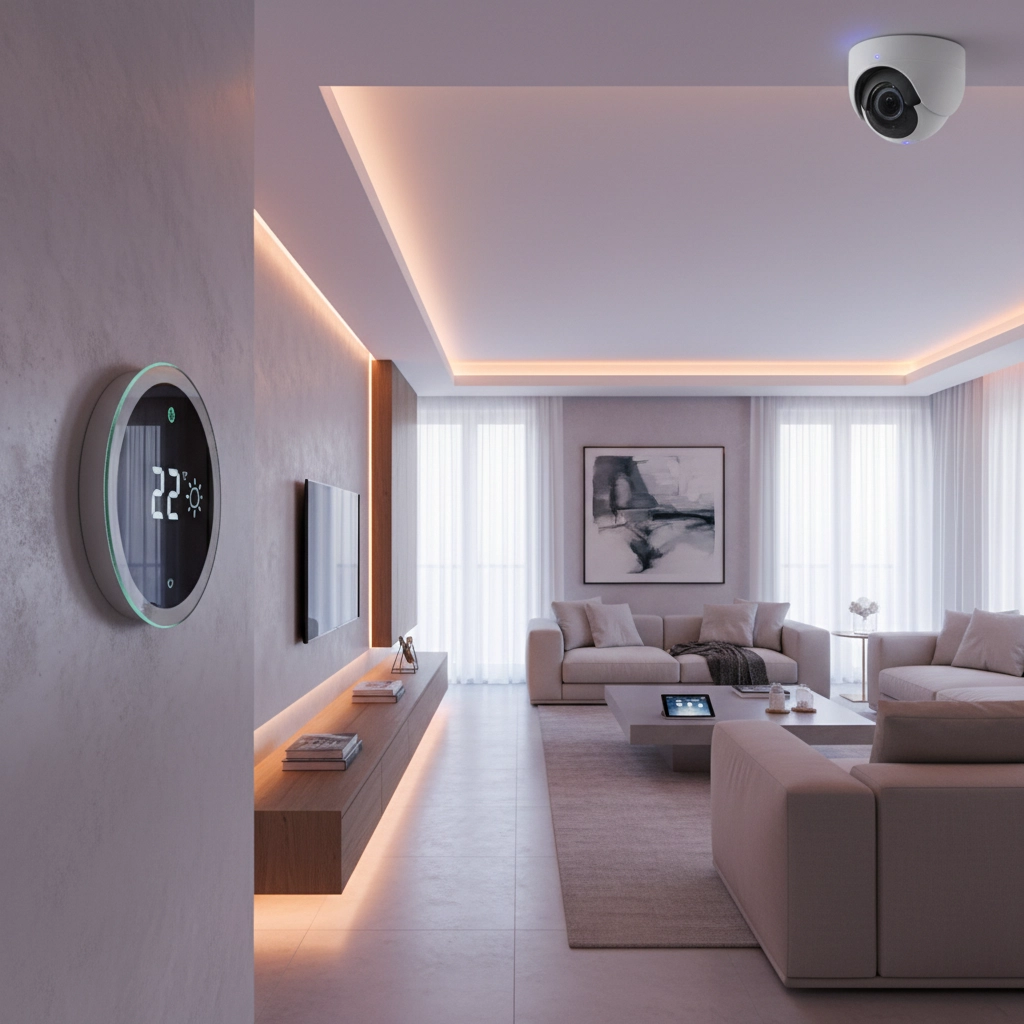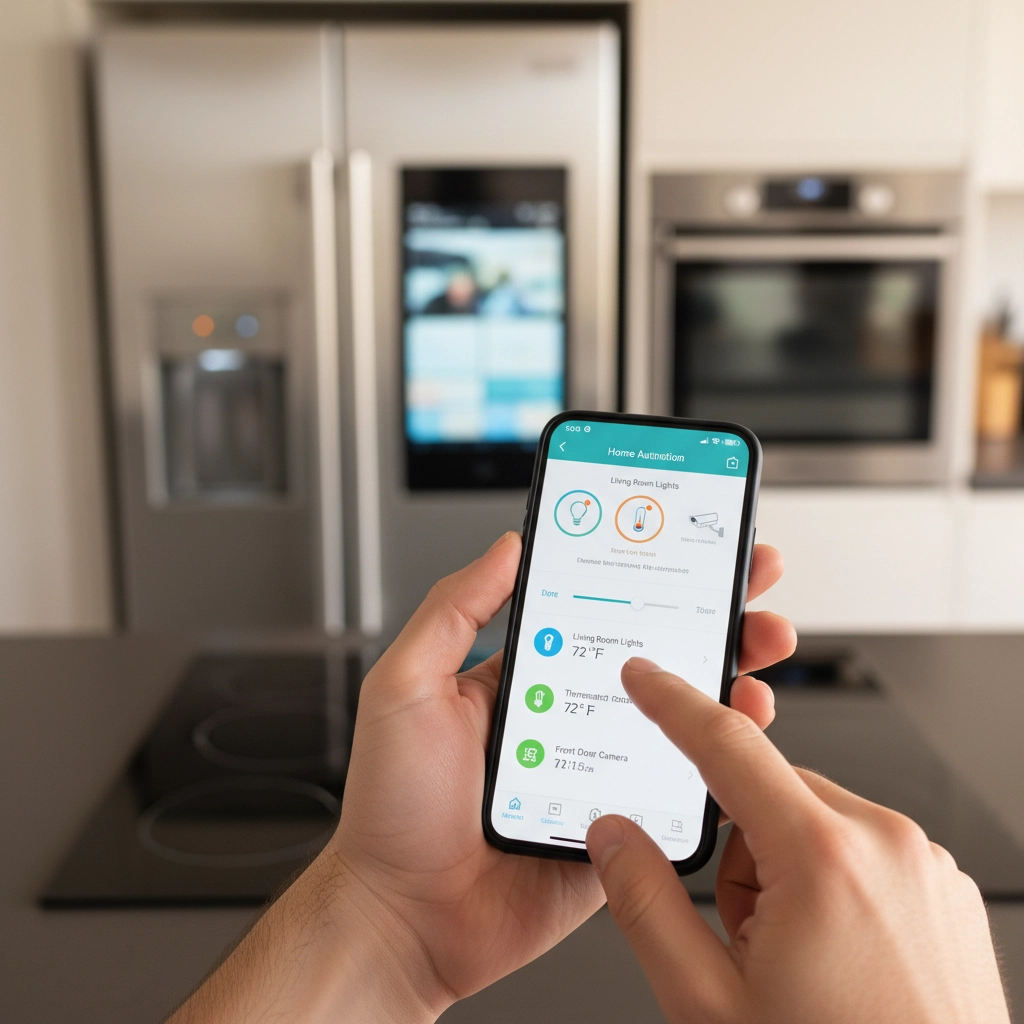Published: September 28, 2025
Welcome to our store! Building a smart tech ecosystem has become essential for modern living, with the smart home market projected to surpass $633 billion by 2032. Whether you're starting fresh or expanding your current setup, creating a connected home environment offers unmatched convenience, energy efficiency, and enhanced security.
Your smart tech ecosystem serves as the foundation for automation that adapts to your lifestyle while providing long-term value through energy savings and improved functionality. Let's explore everything you need to build a successful smart home system that works seamlessly for years to come.
Strategic Planning: Your Foundation for Success
Before purchasing any devices, establish clear goals for your smart home system. Effective planning prevents costly mistakes and ensures your investment delivers maximum value.
Define Your Priorities:
- Determine which areas need the most improvement (security, energy efficiency, convenience)
- Set a realistic budget that includes installation and ongoing maintenance costs
- Create a timeline for phased implementation to spread expenses over time
- Assess your current infrastructure including Wi-Fi coverage and electrical systems
Your comprehensive plan should include device locations, networking requirements, and integration possibilities. Consider involving all household members in the planning process to ensure the system meets everyone's needs and preferences.

Choosing Your Smart Home Ecosystem
The three major platforms dominate the smart home landscape, each offering distinct advantages for different user needs.
Google Home provides excellent value and versatility with wide device compatibility across multiple brands. Its intelligent voice assistant delivers accurate responses and seamless automation control through both Android and iOS devices. Google offers affordable hub options, making it budget-friendly for most households.
Amazon Alexa leads the market with compatibility across over 100,000 devices and extensive smart speaker options. As the pioneer in smart home voice control, Alexa provides intuitive operation and comprehensive automation possibilities at competitive prices.
Apple HomeKit prioritizes security and privacy through encrypted protocols and secured storage within Apple's ecosystem. Users can control devices through iPhones, iPads, and Macs using Siri voice commands, though fewer compatible devices are available and costs tend to be higher.
Essential Device Categories for Your Smart Home
Building your ecosystem requires selecting devices that work together as a unified system. Focus on open standards and interoperability to ensure long-term compatibility.
Smart Lighting Systems Transform your home's ambiance and energy efficiency with smart switches, dimmers, and color-changing bulbs. Modern LED smart bulbs offer programmable schedules, remote control, and integration with motion sensors for automated operation.
Climate Control Solutions Smart thermostats and environmental sensors provide automated temperature management while reducing energy consumption. These devices learn your preferences and adjust settings based on occupancy and weather conditions.

Security and Monitoring Comprehensive protection includes smart locks, security cameras, and monitoring systems that send alerts to your smartphone. Many devices offer cloud storage for recorded footage and remote access capabilities.
Energy Management Tools Smart plugs, switches, and monitoring devices help track energy consumption and identify opportunities for savings. These tools provide detailed usage reports and can automatically turn off devices when not needed.
Installation and Integration Best Practices
Device installation complexity varies from simple plug-and-play solutions to professional electrical work requirements. Plan your installation approach based on device types and your technical comfort level.
Network Optimization Ensure robust Wi-Fi coverage throughout your home before installing smart devices. Consider mesh networking systems for larger homes or areas with poor connectivity. Strong network performance prevents device disconnections and ensures reliable automation.
Device Setup Process Follow a systematic approach for each device: complete initialization procedures, establish Wi-Fi connections, and integrate with your chosen platform. Use consistent naming conventions and organize devices by room location for easier voice control and management.
Integration Testing After connecting each device, test functionality through your platform app to verify proper operation. Check automation rules, voice commands, and mobile app controls to ensure everything works as expected.

Maintenance and Troubleshooting Your System
Regular maintenance keeps your smart home system running smoothly and prevents common issues before they become problems.
Common Issues and Solutions Connectivity problems typically stem from Wi-Fi issues or device malfunctions. Restart your router and affected devices when experiencing connection problems. Unresponsive devices usually require restart procedures, but persistent issues may indicate hardware problems requiring replacement.
Maintenance Schedule
- Weekly: Check device responsiveness and review automation performance
- Monthly: Clean sensors and cameras, update firmware when available
- Quarterly: Review energy usage reports and adjust settings for optimization
- Annually: Evaluate system expansion needs and replace device batteries
Keep devices clean and dust-free for optimal performance, as accumulated debris can interfere with sensors and operation. Regular firmware updates address security vulnerabilities and add new features.
Future-Proofing Your Investment
Smart home technology continues evolving rapidly, making flexibility crucial for protecting your investment. Choose devices and platforms that support open standards and regular updates.
Scalability Considerations Plan for system expansion by selecting platforms that accommodate additional devices without requiring complete system replacement. Consider your household's changing needs and technology preferences when making initial choices.
Data-Driven Optimization Your smart home system generates valuable usage data that enables informed decision-making about energy consumption, security patterns, and automation effectiveness. Use this information to optimize settings and identify areas for improvement.

Long-Term Value Creation Beyond convenience, smart home systems provide measurable returns through energy savings, enhanced security, and improved quality of life. The technology increasingly supports aging-in-place initiatives and sustainability goals that benefit both homeowners and the environment.
Building Your Smart Home with iTech Direct
Creating a successful smart tech ecosystem requires careful planning, quality devices, and reliable support. At iTech Direct, we offer comprehensive selections of smart home devices, security systems, and automation tools to build your ideal connected home.
Your smart home investment pays dividends through enhanced convenience, improved security, and energy efficiency that reduces monthly costs. Start with core devices in high-impact areas, then expand your system gradually as needs evolve and budgets allow.
The smart home landscape of 2025 offers unprecedented opportunities for creating connected living spaces that adapt to your lifestyle while providing long-term value and enjoyment.
Subscribe to our newsletter to stay informed about the latest smart home technology trends and exclusive offers on cutting-edge devices.

